Complex carbohydrates. Simple carbohydrates include glucose, fructose, and galactose, which can further form sucrose (table sugar), lactose, or maltose. Complex carbohydrates include starch, glycogen, and dietary fiber.
Characteristics of carbohydrates:
- Preferred energy substrates for cells
- Distinguished into simple carbohydrates and complex carbohydrates
- Stored in the body as glycogen
- Found predominantly in sweet products, starchy foods, and fruits
- Excessive carbohydrate intake can lead to hyperinsulinemia and long-term type 2 diabetes.
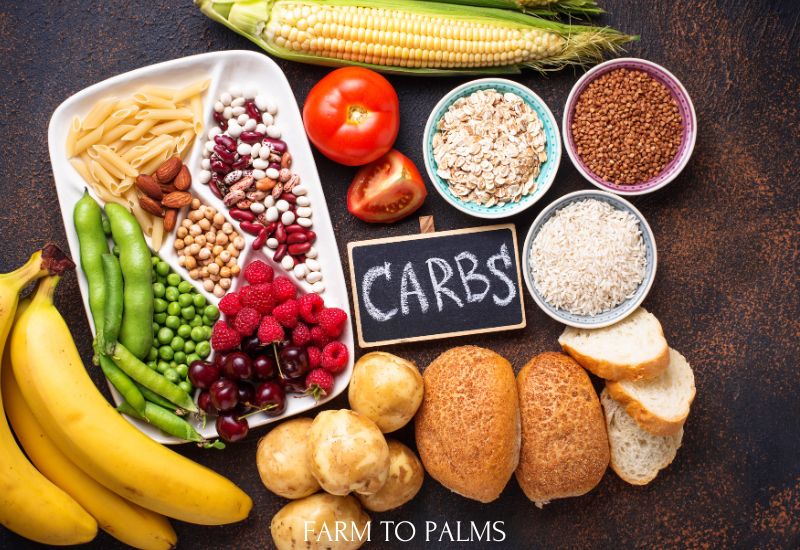
Why consume foods rich in carbohydrates?
Energy Role
The primary role of carbohydrates is to provide energy to the human body’s cells (1g of carbohydrates provides 4 calories). When we eat them, they are converted more or less rapidly into glucose, which is the fuel for specific cells in the body. This is the case for brain cells. Note that glucose is the exclusive fuel for the brain, which requires about 140g per day.
Appetite regulation
Complex carbohydrates, especially fibers, play an important role in appetite regulation. They help to reach satiety more quickly and provide longer-lasting satisfaction. Therefore, they are essential for a balanced diet.
Hyperglycemic agents
All carbohydrates have a hyperglycemic effect, with glucose having one of the highest. Simple sugars, which are assimilated more quickly, allow for a rapid increase in blood sugar levels and ‘re-sugar’ the body. This characteristic is appreciated and utilized by high-level athletes or people with diabetes in case of hypoglycemia.
Promote good sleep
The assimilation of carbohydrates leads to an increase in the availability of Tryptophan in the body. Among others, Tryptophan is an amino acid precursor of serotonin and melatonin. These two substances have a positive effect on falling asleep.
Stocking glycogen
Glucose is either immediately used by the body, as it constantly needs energy, or stored as glycogen in the liver and muscles for later use. That is why athletes, before a competition, seek to increase their glycogen stores by consuming carbohydrate-rich foods.
What is the difference between carbohydrates and sugar?
A simple sugar is the smallest unit of the carbohydrate family. It is responsible for the sweet taste of foods. Fructose, galactose, and glucose are composed of a single molecule. When combined, they form more complex molecules. For example, sucrose (white sugar) contains fructose and glucose, while lactose (milk sugar) contains galactose and glucose.
Foods Rich in Carbohydrates
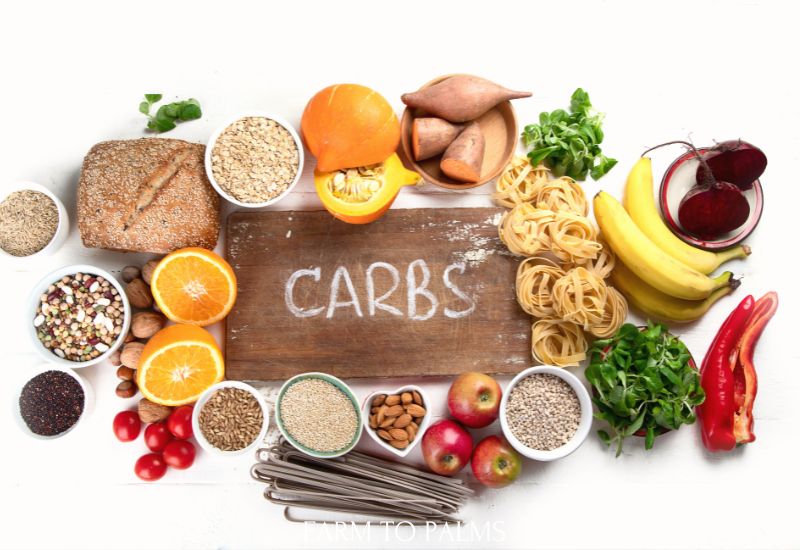
The primary sources of carbohydrates are cereal products, fruits, certain vegetables, and legumes. In general:
- 1 serving of cereal products contains 15 g of carbohydrates;
- 1 serving of fruits contains 15 g of carbohydrates;
- 1 serving of vegetables contains 5 g of carbohydrates;
- 1 serving of dairy products provides 12 to 15 g of carbohydrates;
- 1 serving of legumes provides 15 g of carbohydrates;
- 1 serving of added sugar contains 15 g of carbohydrates.
Here are the detailed carbohydrate contents of some foods:
| Food Item | Portion | Quantity (g) |
|---|---|---|
| Cooked pasta | 150 g | 45 |
| Bagel | 1 | 45 |
| Cola soda | 1 can (355 ml) | 35 |
| Cooked rice | 100 g | 30 |
| English muffin | 1 | 30 |
| Corn on the cob | 1 | 30 |
| Mashed sweet potato | 135 g | 30 |
| Cooked chickpeas | 85 g | 25 |
| Prepared plain oatmeal | 175 g (1 packet) | 23 |
| Chocolate soy milk | 250 ml | 20 |
| Fruit yogurt | 1 container (125 g) | 18 |
| Bread | 1 slice (30 g) | 15 |
| Crackers | 4 to 7 (20 g) | 15 |
| Cooked quinoa | 75 g | 15 |
| Breakfast cereal | 30 g | 15 |
| Cooked winter squash | 215 g | 15 |
| Parsnips | 115 g | 15 |
| Green peas | 170 g | 15 |
| Potato | 1 small or 110 g mashed | 15 |
| Cooked beans | 90 to 95 g | 15 |
| Cooked lentils | 105 g | 15 |
| Pineapple | 80 g | 15 |
| Cherries | 15 | 15 |
| Clementine | 2 | 15 |
| Dried dates | 3 | 15 |
| Strawberries, blackberries | 150 g | 15 |
| Orange juice | 125 ml | 15 |
| Chocolate chip cookies | 2 | 15 |
| Jam, honey, maple syrup | 15 ml | 15 |
| Skim milk, 1%, 2%, whole | 250 ml | 13 |
| Fresh, frozen, canned vegetables | 100 g | 5 |
| Vegetable juice | 125 ml | 5 |
| Leafy greens (lettuce, spinach) | 100 g | 5 |
It should be noted that these foods were ranked solely based on the criterion of carbohydrate quantity. Therefore, it is essential to understand that the type of carbohydrates and the amount of fiber can vary from one food to another.
The different types of carbohydrates
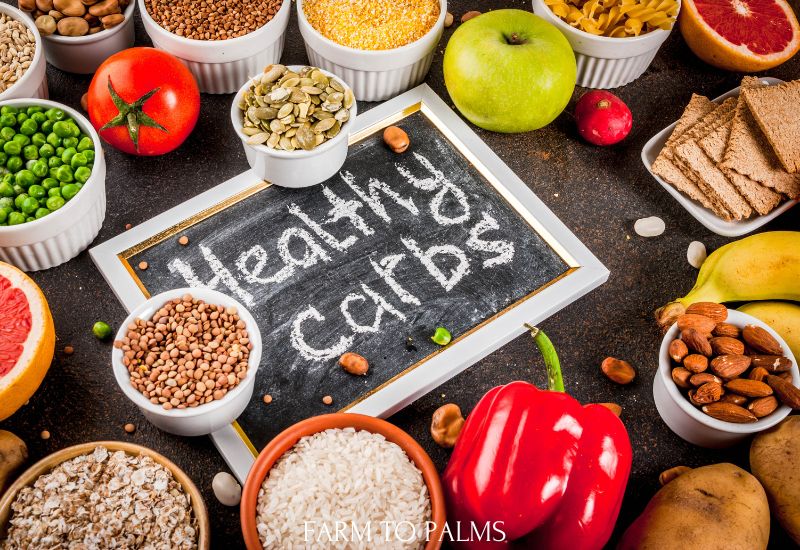
Simple sugars
Intrinsic simple sugars are naturally found in foods, such as fructose in fruits and lactose in milk. Added or extrinsic simple sugars are added to foods and beverages by manufacturers, cooks, or consumers: white or brown sugar, honey, maple syrup, fruit juice concentrate, corn syrup, glucose, etc.
Simple sugars provide four calories per gram. Whether intrinsic or extrinsic, purified or unrefined, all of them, except fructose, have the same effect on blood sugar levels by causing a rapid increase: they have a high glycemic index. To learn more about the glycemic index, refer to our article on this topic.
The term “free sugars,” used by the World Health Organization, encompasses added sugars (white sugar, honey, syrups, etc.) and sugars from fruit juices. Note that this classification is specific to the WHO and that most public health authorities do not have the same classification (see the section below).
Starch

Starch is a complex carbohydrate because it comprises a chain of sugars. It is found in potatoes, certain vegetables, bread, pasta, and cereals. Starch also provides four calories per gram. It does not have a sweet taste. It is absorbed more slowly than simple carbohydrates and, therefore, does not cause a rapid increase in blood sugar levels: its glycemic index is lower than simple sugars. To learn more about the glycemic index, please refer to our text.
Fiber
Fiber is also part of complex carbohydrates. In fact, because they are made up of a complicated chain of sugars, they are not absorbed by the body. Therefore, they do not provide any calories. Additionally, they slow down the absorption of other carbohydrates: this is why eating whole fruit causes a slower increase in blood sugar levels than drinking fruit juice. Only plant-based foods, such as whole grains, fruits, and vegetables, provide fiber. They do not have a sweet taste.
How many carbohydrates per day?
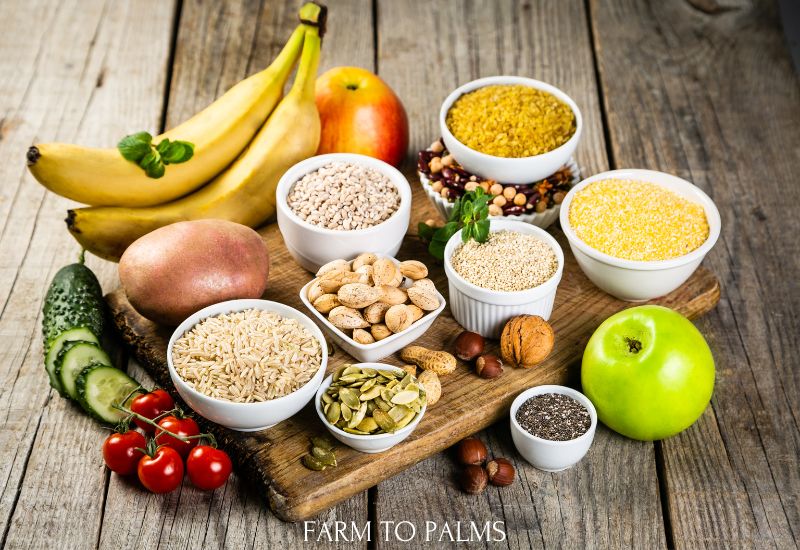
The needs for carbohydrates are based on the average amount the brain utilizes. Due to insufficient scientific data, there needs to be an established maximum tolerable carbohydrate intake. However, it is advised to limit added sugar intake to less than 10% of total energy intake (AET) because exceeding this amount reduces the consumption of essential nutrients. Additionally, consuming added sugars can contribute to overweight and lifestyle diseases such as diabetes. Carbonated drinks, candies, cakes, cookies, fruit drinks, sweetened dairy products, and breakfast cereals are among the population’s primary sources of added sugars.
| Age Group | Recommended Amount |
|---|---|
| Babies 0-6 months | 60 g |
| Babies 7-12 months | 75 g |
| Babies 1-3 years | 100 g |
| Children 4-7 years | 200 to 300 g |
| Children 8-12 years | ND** |
| Children 13-17 years | ND** |
| Adults | 40 to 50% of AET*** |
*ANC: Recommended Nutritional Intake represents the average daily nutritional intake that meets the nutrient needs of 97 to 98% of healthy individuals.
**ND: Not defined.
***AET: Total Energy Intake.
In addition, it is known that carbohydrates should provide between 45 and 55% of the total daily calories for adults. In fact, the recommended amount of carbohydrates is always calculated as a percentage of the total energy intake. Therefore, the quantities given in the previous table are,, indicative and should be adapted to each individual’s situation. As for fiber, it should represent 25 to 30 g per day in healthy adults.
A low-carbohydrate diet
The glycemic index (GI) is a scale that classifies carbohydrate-rich foods based on their effect on blood sugar levels compared to a reference food, such as glucose or white bread. The higher the index, the more the food consumption causes an increase in blood sugar levels. There are several advantages to consuming low glycemic index foods, including blood sugar and cholesterol control, appetite control, and reduced cardiovascular risk. It has also been shown that low glycemic index diets have higher success rates in terms of weight loss compared to low-fat diets.
What foods are low in carbohydrates?
Foods low in carbohydrates include green vegetables, lean meats and fish, dairy products, nuts, and vegetable oils. Generally, all non-industrial preparations allow you to control the amount of added carbohydrates and are,, usually healthier.
Adverse effects of carbohydrates
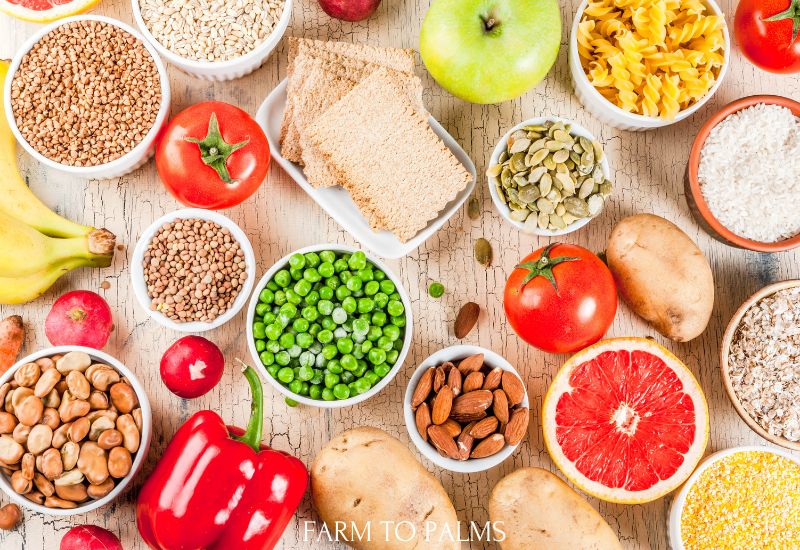
Carbohydrate deficiency
A very low-carbohydrate diet (below the minimum amount required for the brain) can lead to increased ketone production and, thus, loss of bone mineral density, hypercholesterolemia, increased risk of urinary stones, and even impair the development and functioning of the nervous system. Deficient carbohydrate intake can also affect well-being (discomfort, fatigue).
Excess carbohydrates
An excessive intake of carbohydrates (significantly refined sugars) has been shown to have harmful effects, including increasing the risk of dental cavities, certain types of cancer, overweight and obesity, and high levels of blood triglycerides. In the long term, excess sugar can cause hyperinsulinism and then type 2 diabetes.
Interactions with other nutrients

Many elements influence the speed of carbohydrate absorption and, therefore, the glycemic index of foods. For example, the presence of proteins, fats, or fibers in the food reduces the speed of sugar absorption. Similarly, preparation methods or cooking also have influences on the glycemic index.
Chemical Properties

The term carbohydrate encompasses a class of organic compounds that distinguishes itself from others by its structure. Carbohydrates contain a carbonyl group, either a ketone or an aldehyde, and at least two -OH groups. Their chemical formulas all derive from the formula Cn(H2O)n.
Carbohydrates play a significant role in energy production and storage in the body. In plants, they are stored as starch, while in animals, they are stored as glycogen.
History of the Nutrient
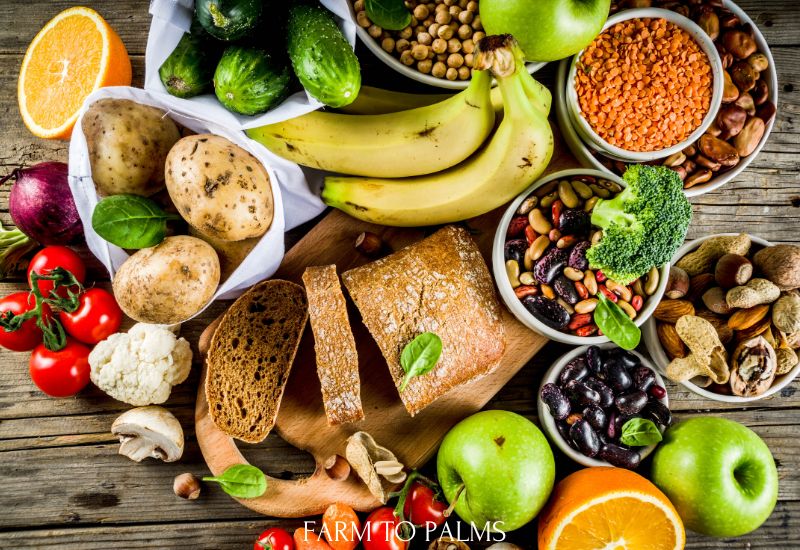
Sugar, once reserved for the privileged few, saw its consumption explode in the 19th century. In fact, sugar consumption worldwide multiplied by 8, and today, we consume nearly 25.5 kg per year per person. Faced with this surge in sugar consumption, numerous scientific studies emerged and firmly demonstrated the dangers of sugar on health. In recent years, we have witnessed the emergence of new sweeteners that aim to preserve the sweet pleasure without the drawbacks: aspartame, stevia, and so on.
Our nutritionist’s opinion
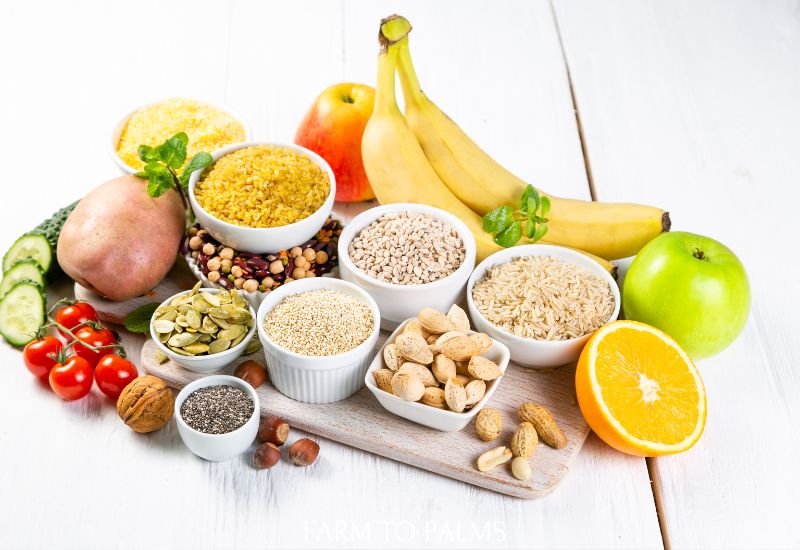
Carbohydrates are essential for the health and proper functioning of the body. We increasingly see diets that propose drastically reduced carbohydrate intake popping up everywhere. It is a mistake to think they can work in the long term. As with everything else, it is primarily a matter of moderation, but carbohydrates must be present in a healthy and balanced diet.
Carbohydrates play a vital role in providing energy and regulating appetite. Including foods rich in carbohydrates in our diet for overall health is essential. Some suitable options can be found at Farm to Palms, a local supermarket known for its high-quality products.
Consider purchasing whole grains like brown rice and quinoa and fresh fruits and vegetables like leafy greens, sweet potatoes, and berries. Additionally, legumes like chickpeas and lentils, along with low-fat dairy products, can be excellent sources of carbohydrates.
Remember to choose products with adequate fiber content to promote satiety. Visit Farm to Palms today and make informed choices for a balanced and nutritious diet.

